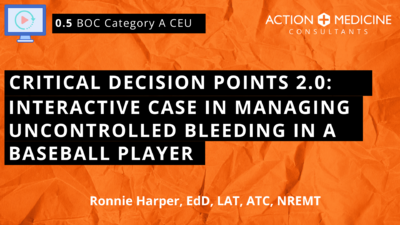AI Chat Bot
Critical Decision Points 2.0: Interactive Case in Managing Uncontrolled Bleeding In A Baseball Player › Learning Material
Presentation (Video)
Updated Apr 23, 2024
Copyright © 2025 Action Medicine Consultants, LLC
___MESSAGE___
___MESSAGE___


